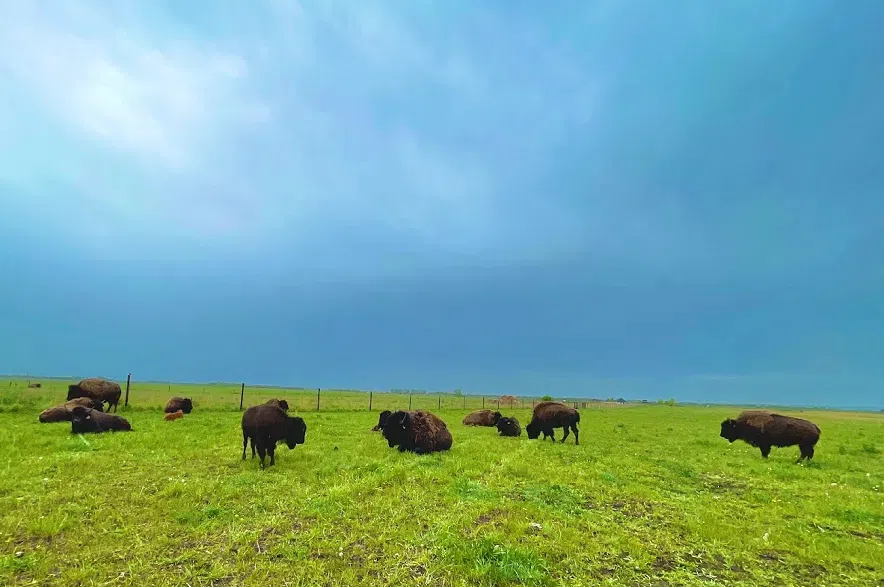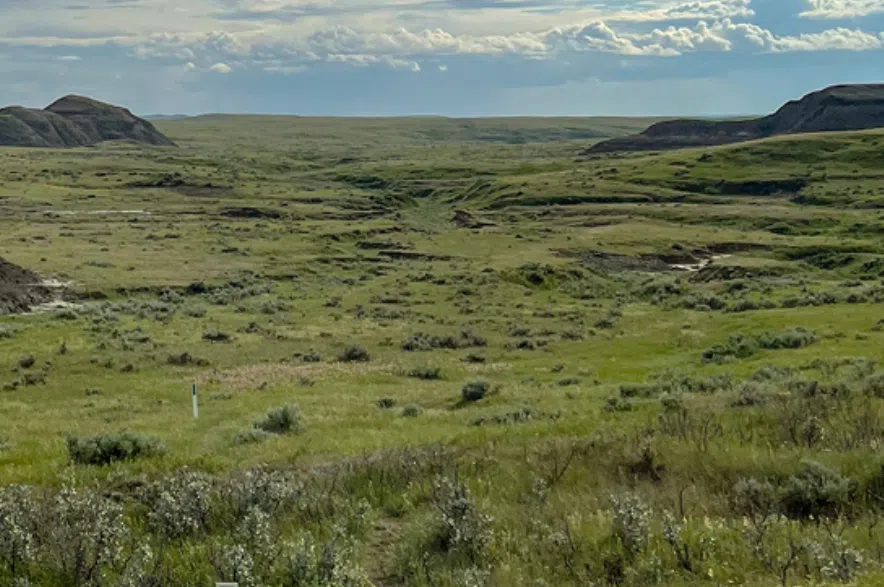Murray Wood was guest host on The Evan Bray Show on Friday. He spoke with Carolyn Gaudet, manager of the Saskatchewan Prairie Conservation Action Plan and the chair of the North Prairie Restoration/Reclamation Workshop (NPRRW) planning committee about the province’s shrinking grassland ecosystems and their importance to biodiversity in the province.
Listen to Carolyn Gaudet on The Evan Bray Show:
This interview has been edited and condensed for clarity.
Wood: How much grassland is left in Saskatchewan?
Gaudet: Recent estimates suggest that there’s between 11 and 14 per cent of our grasslands remaining. We are experiencing things like biodiversity collapse because there is not enough habitat for our species at risk.
Wood: Where is the remaining native habitat?
Gaudet: Mostly in southern Saskatchewan, especially in the southwest. South of Swift Current and Maple Creek there are quite a few large parcels of native prairie. Other than that, you can find them interspersed throughout southern Saskatchewan. It can look different in different areas, mostly dependent on the type of soil.
Beyond Saskatoon, it transitions to boreal, but everywhere south of Saskatoon was previously grasslands.
Read more:
- Controlled burns in Beaver Creek area aim to help maintain prairie ecosystems
- Is Saskatchewan prepared for the 2025 wildfire season?
Wood: What makes grasslands so special?
Gaudet: There’s a lot of diversity in grasslands. We have over 70 species of grass in southern Saskatchewan, so that alone is crazy to think about. We also have a ton of wild flowers and birds, insects, even things like lichen.
On top of all that biodiversity, there’s also the ecological goods and services that healthy native prairie provides — water retention, carbon sequestration, erosion control, sediment trapping.
One thing that makes native prairie so special is they have very extensive root systems. So a lot of the carbon is stored underground in the roots that can go a few metres underground.

Grasslands evolved under three ecological processes — the climate, grazing and fire. (Alex Brown/650 CKOM)
Wood: Has the loss of bison changed prairie grasslands?
Gaudet: Definitely. Grasslands evolved under three ecological processes — the climate, grazing and fire. With European settlement, we’ve lost the bison and the fire, and that affects the biodiversity and keeping everything like in balance.
Cattle now provide that grazing role but for years, the thought was that grazing was bad for grass, but it’s actually very good. Grass needs to be grazed.
Wood: Tell us about the workshop that is coming up?
Gaudet: It’s a three-day event which is actually two events combined. The first is the Prairie Fire Summit on Feb. 11 and then the 11th Native Prairie Restoration/Reclamation Workshop is Feb. 12 and 13.
Between the two there will be 36 presentations, two panel discussions, a trade show, a poster session, an evening banquet, and a trivia night. They’ll also be case studies for hands-on problem solving, and opportunities for networking.
Wood: What is the role of fire to help with grasslands preservation?
Gaudet: Currently in Saskatchewan we’re in what we would call a fire deficit.
The naturally occurring fire cycle in prairies before European settlement would be one to 10 years, where a certain area would have a wildfire. Now there’s hardly any fire on the landscape.
And so the group that is planning the Prairie Fire Summit is the Canadian Prairies Prescribed Fire Exchange. Their role is to provide training opportunities to bring prescribed fire back to the landscape, and share resources and information.
At the summit they will be talking about how to get fire back on the landscape that’s mostly privately owned, how fire affects grazing, how it can prevent wildfires, equipment to use, and things like that.
Climate, grazing and fire are needed to maintaining the ecosystem balance.
Wood: Has seed been saved from any of these grasslands for the future?
Gaudet: No, but there are seed suppliers that exclusively grow native seeds for restoration projects. But for 20 or 30 years there has been a seed supply shortage.
Read more:
- Controlled burns in Beaver Creek area aim to help maintain prairie ecosystems
- Is Saskatchewan prepared for the 2025 wildfire season?







